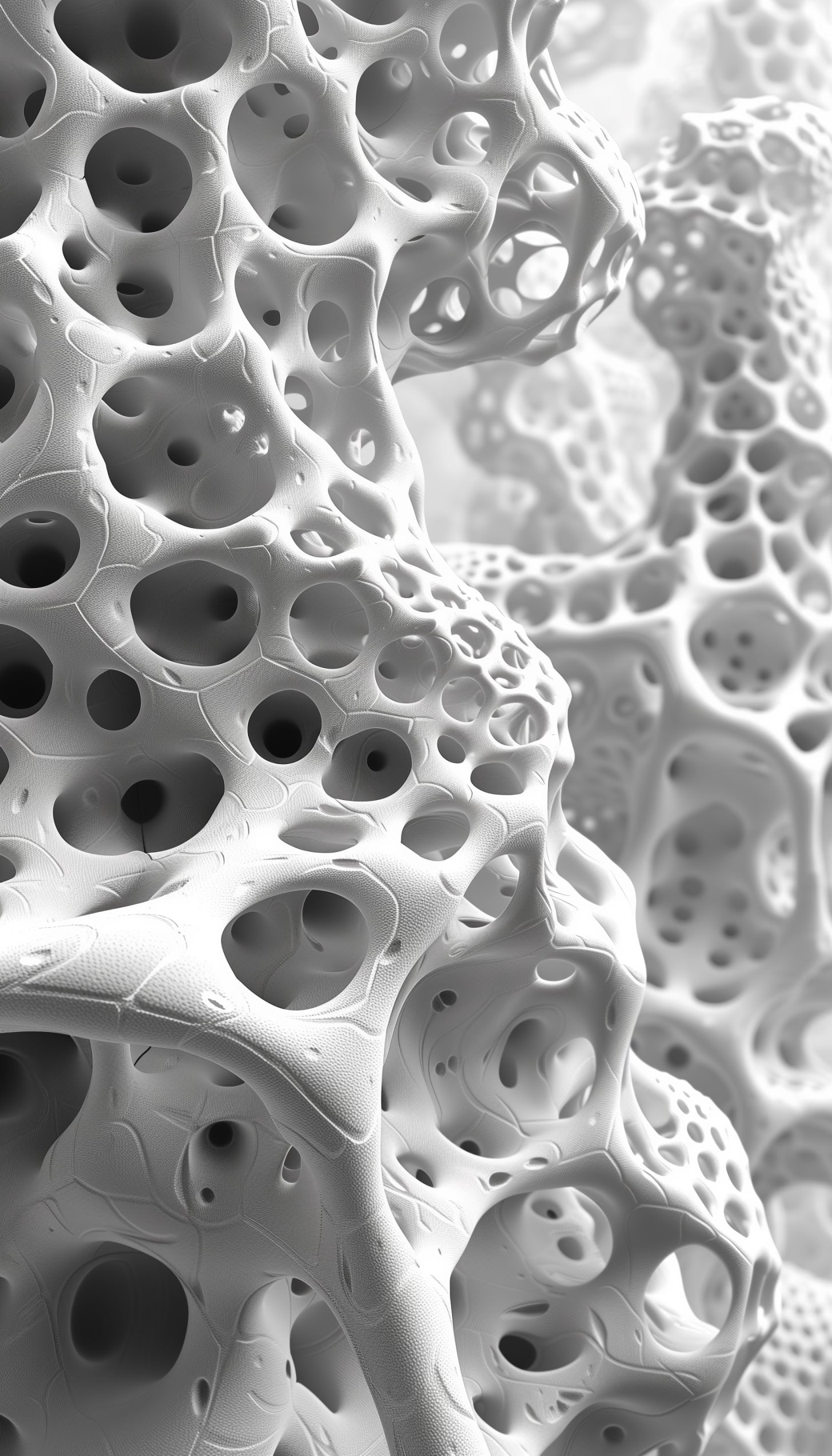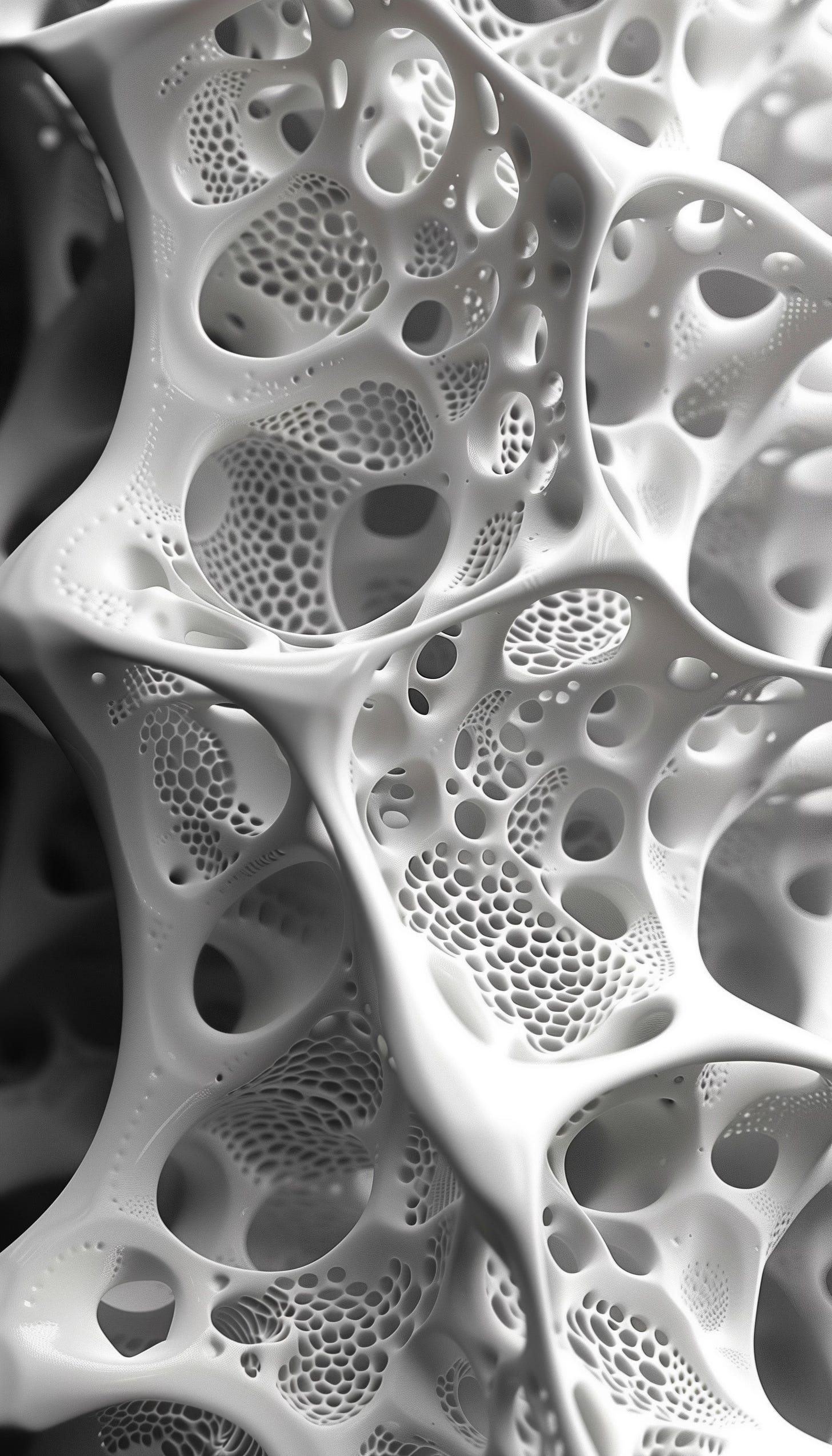Calcium is one of the most vital minerals in our bodies, playing a critical role in the structure and function of our skeletal system. But have you ever considered the fascinating parallel between the calcium in our bones and the calcium that forms extraordinary rocks like marble? Just as marble is prized for its strength and beauty, our bones are a living, regenerating stone that supports us throughout our lives. In this blog post, we'll explore the benefits of calcium in our diet and in nature, and how to best care for our bones as we age.
The Marvel of Calcium: Bones and Marble
Structural Integrity: Just as marble is a strong and resilient stone, our bones are made of a similar mineral composition, providing the framework that supports our bodies. This living stone of bone tissue is constantly regenerating, replacing old cells with new ones to maintain strength and flexibility.
Regeneration and Repair: While marble is a solid, unchanging stone, our bones are dynamic and capable of healing and regenerating. This ability to renew is what allows our skeleton to stay strong throughout our lives, provided we give it the nutrients it needs.
Comparative Strength: Both marble and bones share the characteristic of strength. Marble has been used throughout history to create monuments that stand the test of time, while our bones provide the sturdy support we need to move, grow, and thrive.
Unique Composition: The calcium that forms the intricate patterns in marble is the same mineral that contributes to the density and strength of our bones. This mineral connection underscores the importance of calcium in both art and life, as it is essential for both the beauty of stone and the function of our skeletal system.
Cultural and Historical Significance: Calcium has played a role in human culture and history, not just in the form of marble in architecture, but also in the form of bones as symbols of strength, endurance, and life. Throughout history, strong bones have been a sign of health and vitality, much like the prized marble used in iconic structures around the world.
Taking Care of Your Bones
Our bones may be resilient, but they need proper care to maintain their strength and density, especially as we age. Here’s how you can support your bones:
Dietary Sources of Calcium
Since our bodies cannot produce calcium on their own, it’s essential to include calcium-rich foods in our diet. Some of the best sources include:
Dairy Products: Milk, cheese, and yogurt are well-known for their high calcium content.
Leafy Greens: Kale, collard greens, and broccoli are excellent plant-based sources of calcium.
Fortified Foods: Some cereals, plant milks, and orange juice are fortified with calcium.
Nuts and Seeds: Almonds and sesame seeds are also good sources of this vital mineral.
Fish: Sardines and salmon with bones are rich in calcium.
Bone Density and Exercise
Weight-bearing exercises are crucial for maintaining and improving bone density. Activities like walking, running, and resistance training help stimulate bone growth and strength. As we age, it becomes even more important to incorporate these exercises into our routine to protect against bone loss.
Bone Health Through the Ages
As we age, our bone density naturally decreases, which can lead to conditions like osteoporosis. This affects men and women differently due to variations in bone structure. Women, particularly post-menopause, are at higher risk for bone density loss due to hormonal changes. Men, while also susceptible, generally have larger bone mass, offering some protection against early bone loss. However, both genders benefit from a calcium-rich diet and regular weight-bearing exercise to maintain bone health.
A Calcium-Rich Dessert: Almond and Orange Blossom Yogurt Ice Cream
To help you boost your calcium intake in a delicious way, here’s a recipe for a calcium-rich dessert.
Ingredients:
2 cups Greek yogurt (rich in calcium)
1/2 cup almond butter
1/2 cup honey
1 tablespoon orange blossom water
1/2 cup slivered almonds (toasted)
1/2 teaspoon vanilla extract
1/4 cup fresh orange juice
Zest of 1 orange
Fresh orange slices (for serving)
Instructions:
Prepare the Base:
In a large bowl, whisk together the Greek yogurt, almond butter, honey, orange blossom water, vanilla extract, orange juice, and orange zest until smooth and well combined.
Chill the Mixture:
Cover the mixture and refrigerate for at least 2 hours to let the flavors meld together.
Churn the Ice Cream:
Pour the chilled mixture into an ice cream maker and churn according to the manufacturer’s instructions until the mixture reaches a soft-serve consistency.
Add the Almonds:
During the last few minutes of churning, add the toasted slivered almonds to incorporate them into the ice cream.
Freeze:
Transfer the churned ice cream into an airtight container and freeze for at least 4 hours, or until firm.
Serve:
Scoop the ice cream into bowls or cones and serve with fresh orange slices.
Optional Variations:
Swirl: Add a honey or orange marmalade swirl to the ice cream before the final freeze for an extra burst of flavor.
Chocolate: Mix in some finely chopped dark chocolate for a decadent twist.
Calcium is more than just a mineral; it’s the foundation of both our physical structure and the beautiful, enduring stones that have been valued throughout history. By nourishing our bodies with calcium-rich foods, engaging in regular exercise, and understanding the importance of bone health, we can ensure that our own living stone remains strong and resilient throughout our lives. Whether in the form of marble monuments or the bones that support us, calcium’s legacy is one of strength, beauty, and endurance.











